CASE STUDIES / MORE
Get invaluable insights into the practical applications and effectiveness of ISOTEC’s remediation techniques.
These case studies showcase real-world scenarios where advanced chemical oxidation treatments have been successfully implemented, demonstrating the scope and scale of contamination issues tackled. See detailed accounts of the methodologies used, the challenges faced, and the outcomes achieved, providing a clear picture of how their innovative solutions translate into environmental and economic benefits.
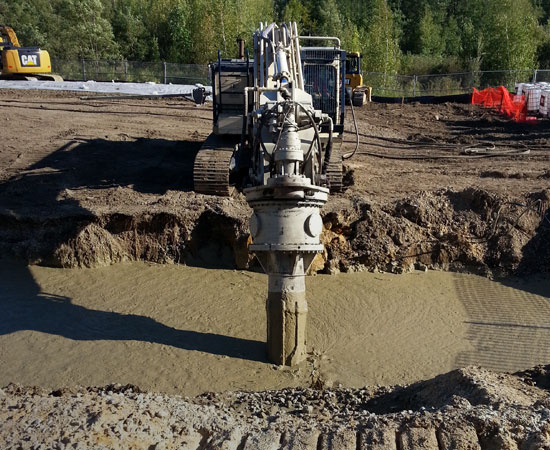
ISOTEC CASE STUDY NO. 78
CHEMICAL OXIDATION SOIL BLENDING USING MODIFIED FENTON’S REAGENT
ISOTEC performed soil mixing of modified Fenton’s Reagent (MFR) to treat 3,000 cubic yards of soils and groundwater impacted with 1,1,1-trichloroethane (TCA) and 1,1-dichloroethane (DCA). A total of 45,000 gallons of chelated iron catalyst and stabilized hydrogen peroxide were blended using a dual axis blender to a mixing depth of 4 to 15 ft bgs. Oxidant dosage was determined from bench-scale testing study performed at the ISOTEC Treatability Laboratory. Post treatment samples indicated average VOC concentration in soil was reduced to <0.06 mg/kg for DCA and <0.15 mg/kg for TCA.
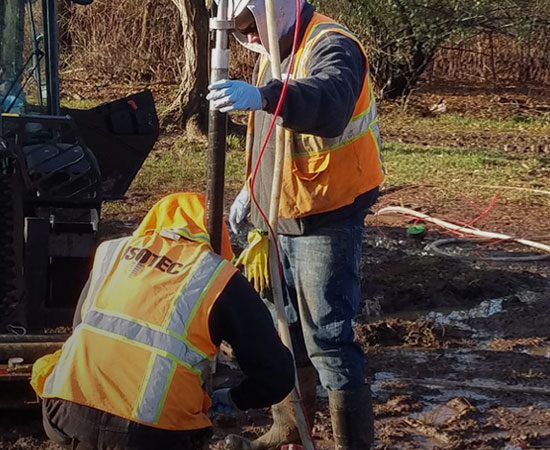
ISOTEC CASE STUDY NO. 104
ENHANCED IN-SITU DECHLORINATION FOR BEDROCK REMEDIATION USING MULTIPLE SUBSTRATES
ISOTEC implemented an EISD program into Passaic formation bedrock utilizing a sequential injection of sodium lactate, small-droplet EVO, large-droplet EVO with ZVI, and bioaugmentation for treatment of chlorinated ethenes and chlorinated ethanes. The sequential injection of electron donors was developed by ISOTEC for source area treatment as well as to enhance dechlorination downgradient of the injection area. Pre-treatment total CVOCs exceeded 50,000 ug/L in multiple bedrock boreholes, and remediation resulted in significant concentrations reduction (99.9% in all monitoring wells in injection area) and shortening of monitored natural attenuation period.
ISOTEC implemented sustainable remedial practices into the program, which resulted in a calculated reduction of 8 metric tons of carbon dioxide.
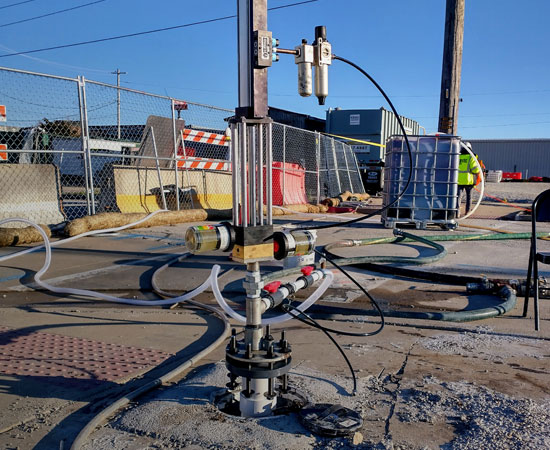
ISOTEC CASE STUDY NO. 121
COMBINED REMEDY OF MGP SITE USING SURFACTANT ENHANCED PRODUCT RECOVERY AND IN-SITU CHEMICAL OXIDATION
ISOTEC installed and operated a surfactant enhanced product recovery (SEPR) system, and performed in-situ chemical oxidation (ISCO) injections for treatment of MGP impacts in soils and groundwater. More than 84,000 gallons of diluted surfactant was injected into 31 injection/extraction wells, with subsequent extraction of a total of 165,000 gallons of groundwater and NAPL. The SEPR system circulated fluids using a push-pull configuration, which was optimized using on-site analysis of interfacial tension (IFT) and diesel range organics (DRO). ISOTEC injected 151,000 gallons of ISCO solutions (Provect-OX) into 250 direct push injection points installed within former source areas as well as within a street with numerous active utilities. The total project duration was 9 months for all required activities, which included site preparation and installation of 31 dual purpose injection/extraction wells via rotosonic methods.
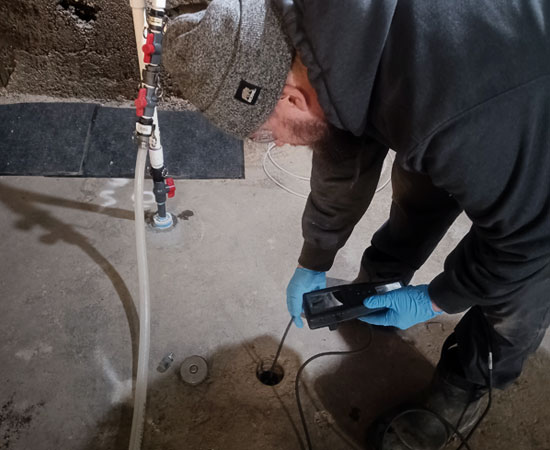
ISOTEC CASE STUDY NO. 127
RESIDENTIAL HEATING OIL REMEDIATION USING CARBOHYDRATE ACTIVATED SODIUM PERSULFATE
Using carbohydrate activated sodium persulfate, ISOTEC injected into 13 wells screened in unsaturated soil installed within a residential basement (screen 1 to 5 ft bgs) to treat residual petroleum hydrocarbons associated with a home heating oil release. Injection solutions were batched from a box truck parked outside the home with hoses running into the basement. Two injection events were completed, and all post-remediation soil samples were below applicable state regulatory criteria.
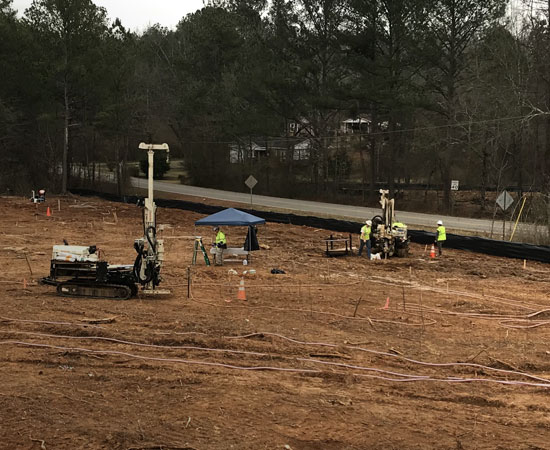
ISOTEC CASE STUDY NO. 107
LARGE SCALE IN-SITU CHEMICAL REDUCTION FOR HEAVY METALS
ISOTEC completed one of the largest calcium polysulfide implementations for in-situ treatment of heavy metals (aluminum, cadmium, cobalt, nickel, lead, thallium, zinc) at a Superfund Site in USEPA Region 4 applying more than 175,000 gallons of 29% calcium polysulfide into a network of 298 injection points spread over 7 acres. A state highway divided the two injection areas, and coordination was conducted to use a culvert for injection hoses and water lines.
If interested in obtaining case studies similar to your own site needs, please contact us and we will send you relevant case studies. (i.e., contaminant type, facility type, geology, remediation technology, etc.) Thank you.
